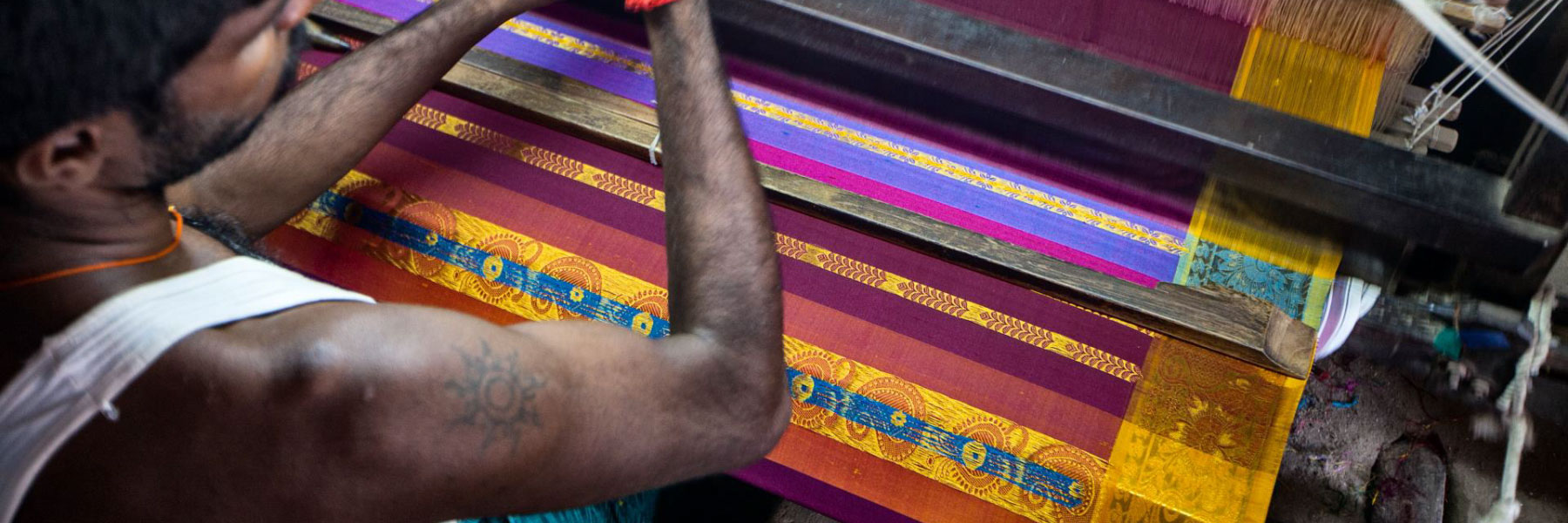
Sorry, we couldn't find anything that matches your search.
Destination

Famous Places to Explore in Hyderabad
A vibrant city with the imposing...

Raipur Tourist Places | Best Place to Visit
The stronghold of several erstwhile...

Ahmedabad
Declared as India's first UNESCO World...
#
Synonymous with style, sophistication and grace, Kanjeevaram sarees have been an integral part of the wardrobe of South Indian women for centuries. Mostly worn during weddings and festivals, they not only look rich and beautiful but also hold traditional importance. The distinct feature of these sarees is the excessive use of real gold zari threads. Its lustre and luxurious drape make it a premium choice among shoppers. The sarees are crafted with superior-quality silk, and most of them are woven with heavy-plied Mulberry silk yarn, to increase their weight and ensure durability. This also adds to the saree’s shine and life, making it a family heirloom in most South Indian homes. The use of heavy silk ensures that the saree drapes better, making the wearer look graceful. To increase the fabric’s thickness, sometimes the yarn is dipped in rice starch and sun-dried.
Kanjeevaram sarees had a humble beginning during the Pallava reign (275 CE to 897 CE). Born in the temple town of Kanchipuram, the idea of Kanjeevaram was conceived to dress the town’s resident god, Lord Shiva, during festivals. A cotton veshti (a traditional men’s garment worn in South India), woven by expert weavers from the finest cotton grown in the region, became a sacred offering to the god. As thrones changed hands over time, so did the gods in the temples of the town. Under the rule of the Chola kings, more and more temples were built in Kanchipuram and were dedicated to Lord Vishnu. The cotton veshti was enhanced with the attachment of a brightly-coloured silk border that was embellished with gold threads. This addition was done by expert Saurashtrian weavers, who are believed to have migrated to Tamil Nadu from Saurashtra (present-day Gujarat). They created the famous korvai technique of weaving to interlace the border to the body of the fabric. Gradually, cotton was replaced with silk, which was purer and more luxurious, and ideal for the worship of Lord Vishnu.
Kanchipuram rose to fame in the 13th century when the Vijayangar kings, considered to be great patrons of art and culture, succeeded the Cholas. King Krishna Deva Raya (1509-1529), of the Vijayanagar empire, promoted weaving and had special sarees made for royal women during festivals and weddings. A local legend says that the silk weavers of Kanchipuram are descendants of sage Markanda, who was considered to be the master weaver for the gods. This story may also have been inspired by the patterns on the sarees woven here, which were drawn from scriptures and figures of gods and goddess from nearby temples.
Kanjeevaram sarees are believed to be auspicious and bring good luck to the bride. They are mostly woven in bridal colours like vermilion red and turmeric yellow. The muthu kattam check pattern of these sarees symbolise the harmonious relationship between the bride and groom. They also feature a half-diamond wall lamp niche design, called arai maadam, representing equality between husband and wife.
Even the purchase of a Kanjeevaram is a part of the wedding ritual, and the knowledge of buying the right saree for the trousseau is passed on from generation to generation.








